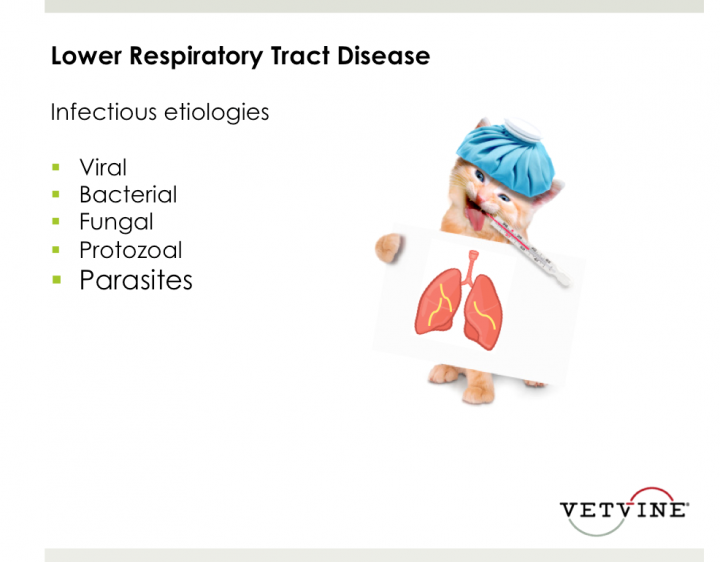The subject we selected for this week’s Evidence Based Update (EBU) is a frequently overlooked cause for respiratory tract disease - parasites - specifically lungworms.
More has become known about various lungworms in recent years, and prevalence of these parasites is increasing worldwide. Coupled with this increase in prevalence and awareness about lungworms, there are newer diagnostics that clinicians should be aware of, treatments, and prevention strategies for lungworm infections.
For those who can recall the teachings from your course work in parasitology, lungworms can infect a variety of species and some have zoonotic potential. There are several different types of lungworms including nematodes, tricurids, and flukes. Most of these (Aelurostrongylus abstrusus, Troglostrongylus spp., Paragonimus spp.) have an indirect lifecycle - in which an intermediate host is involved in the transmission of various stages of the parasite. In contrast, Capillaria aerophila has a direct lifecycle. It is also believed that vertical transmission (parasite transfer by placenta or milk) or acquiring infection through environmental contamination (as we learned in this EBU) can occur.
A paper recently appeared in the veterinary literature which discussed lungworm infections in cats. In this week's Evidence Based Update (available for viewing On Demand), we discuss feline respiratory tract disease caused by lungworm infections and why this is of particular concern. Discussion includes:
View this Evidence Based Update (running time 20 mins; Approved for CE credit in New York and by the NJVMA, pending approval for CE credit by AAVSB RACE).
